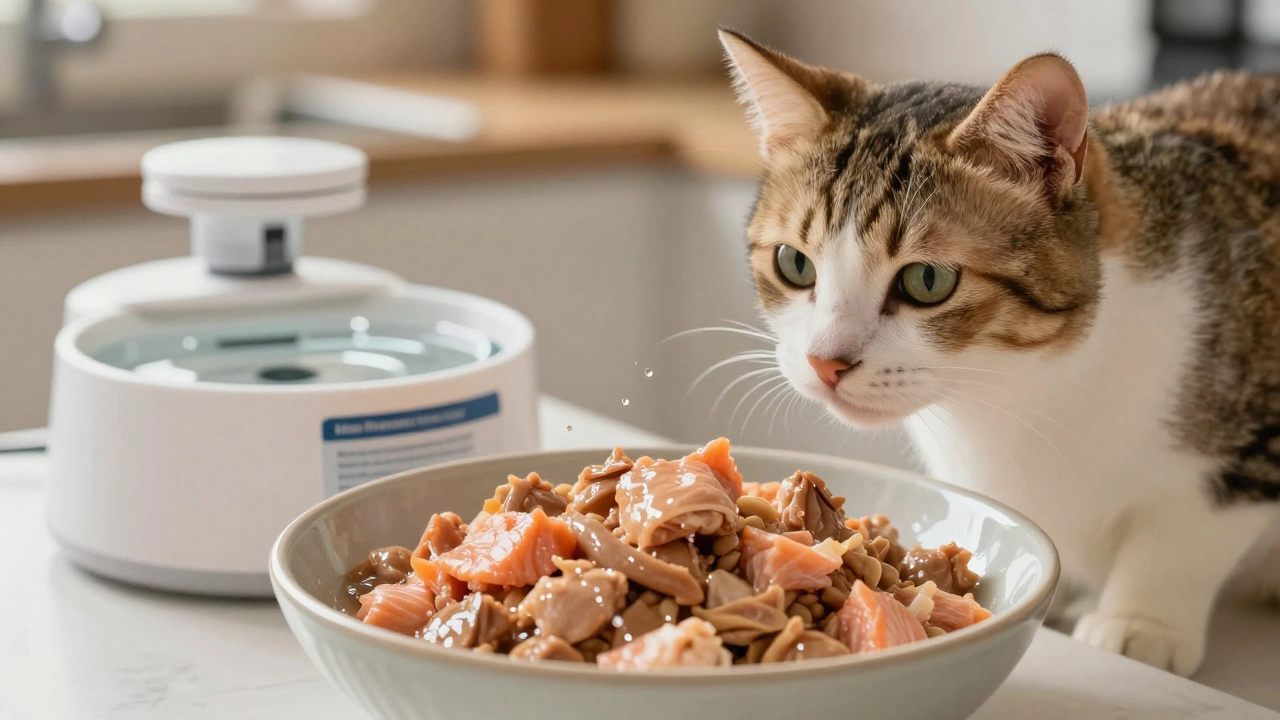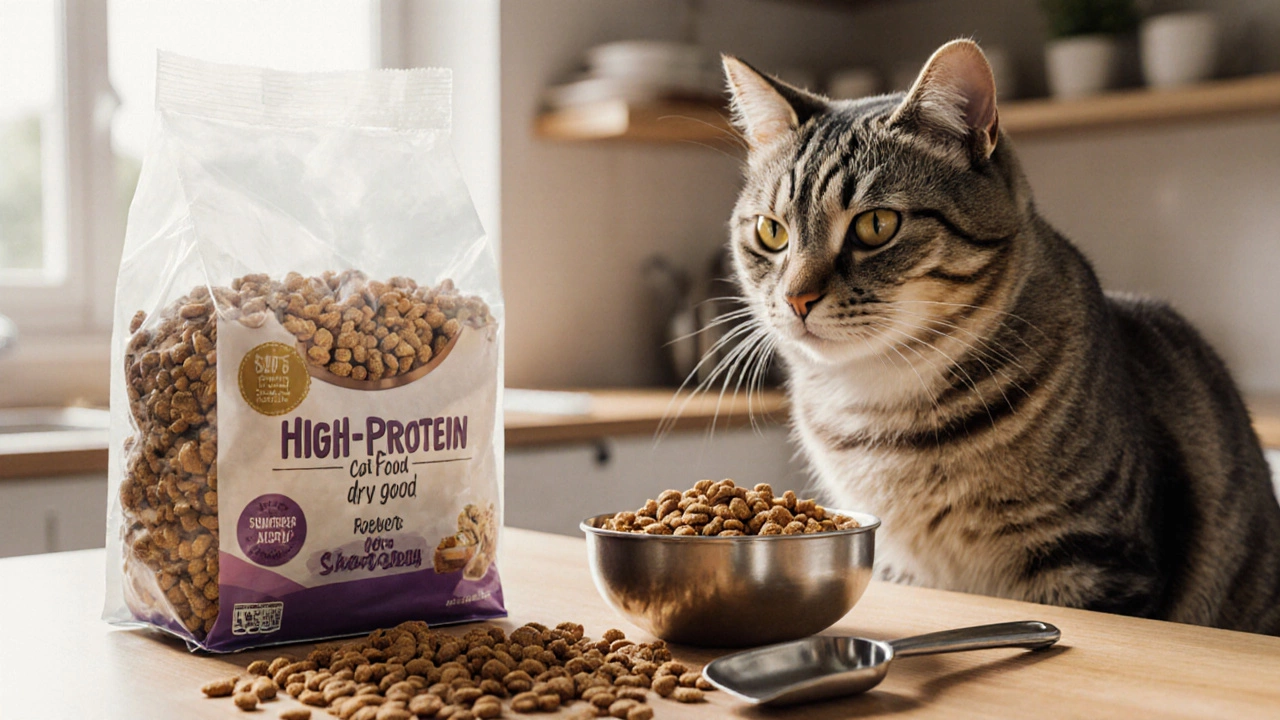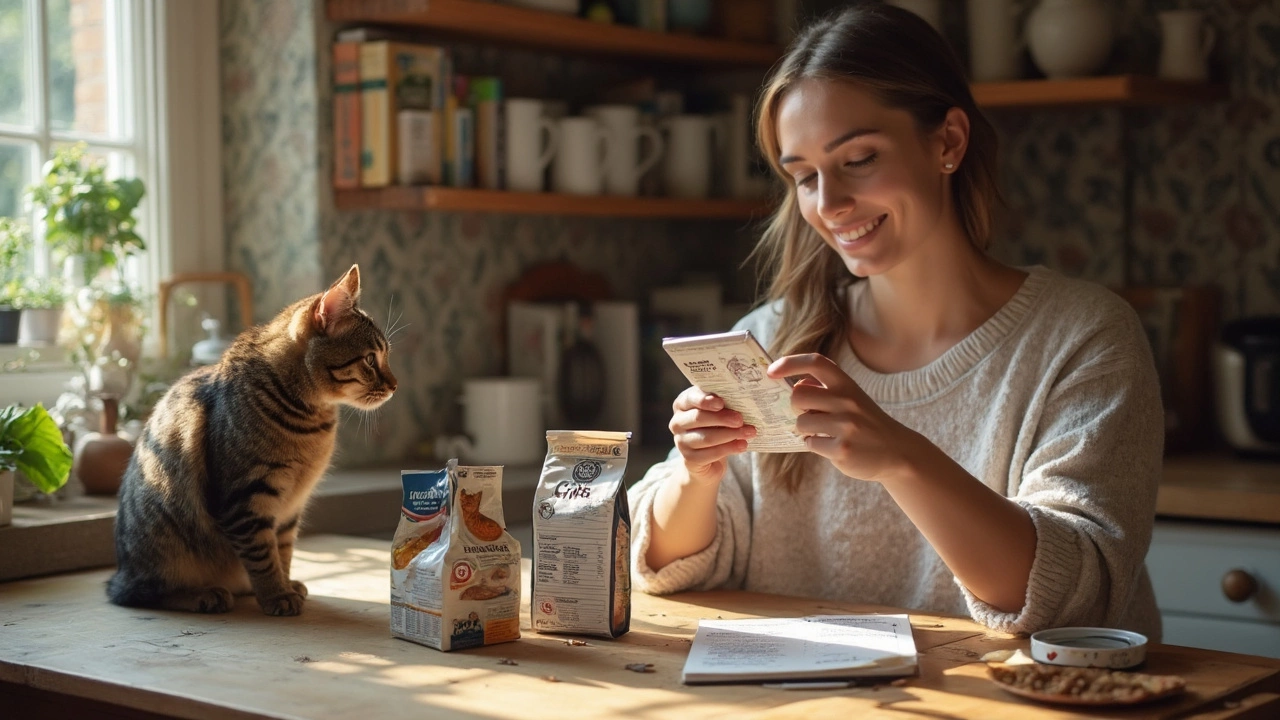Wet vs Dry Cat Food: What Every Cat Owner Should Know
When you stare at the bag of kibble and the can of gravy, it’s easy to wonder which one actually helps your cat thrive. The truth is, both wet and dry foods have solid points, and the best choice often depends on your cat’s age, health, and lifestyle.
Nutritional Differences
Wet food typically contains 70‑80% moisture, which means an extra splash of water for cats that don’t drink much on their own. That extra fluid can keep urinary tracts cleaner, a big win for indoor cats prone to crystals. Wet meals also tend to have higher protein percentages and fewer carbs, mimicking what a cat would eat in the wild.
Dry food, on the other hand, packs calories into a crunchy bite. Its low moisture content helps keep teeth clean through gentle abrasion, though it shouldn't replace regular dental care. Because dry kibble is calorie‑dense, you can feed smaller portions and still meet daily energy needs, which is handy for busy owners.
Both formats can meet AAFCO standards for complete nutrition, but you’ll want to read the label. Look for real meat listed first, avoid mystery meat by‑products, and check that the food includes taurine – an essential amino acid cats can’t produce themselves.
Practical Tips for Choosing
Start by matching food type to your cat’s life stage. Kittens need the extra protein and moisture that wet food offers, while adult cats can handle a mix. Senior cats often appreciate softer textures, so a wet‑focused diet can make eating easier.
If cost is a concern, blend the two. Feed a small portion of wet food at breakfast for hydration and flavor, then top up with dry kibble in the evening. This combo gives the health benefits of both without breaking the bank.
Watch your cat’s weight and coat condition. If they’re gaining extra pounds, cut back on the dry portion or choose a low‑calorie kibble. If their coat looks dull, a higher‑fat wet formula can add shine.
Finally, consider any health issues. Cats with kidney disease often benefit from the extra moisture in wet food, while those with dental problems may need softer textures. Always run new diets past your vet, especially if your cat has special needs.
Bottom line: there’s no one‑size‑fits‑all answer. A balanced mix that respects your cat’s age, health, and preferences will keep them happy, hydrated, and healthy for years to come.
What Is the Best Food to Feed a House Cat? A Simple Guide to Healthy Cat Nutrition
Find out what the best food is for a house cat, including wet vs dry options, key ingredients to look for, and common mistakes to avoid. Simple, science-backed advice for healthier cats.
Can Cats Thrive on Dry Food Only? Facts, Risks & Tips
Explore if cats can thrive on dry kibble alone, understand the nutrition basics, weigh pros and cons, and get practical tips to keep your feline healthy.
Best Cat Food: What's #1 According to Science and Real Cats
Picking the best cat food isn’t about shiny ads or pretty packaging—it’s about what keeps your cat healthy, happy, and full of energy. This article digs into what ‘best’ actually means for cat food, considering science, vet advice, and cats’ real reactions. Learn how to sort through ingredient lists, spot marketing tricks, and make choices based on what truly matters. Get quick tips on reading labels and matching food types to your cat’s needs. Find answers about grain-free options, wet vs dry, and why some foods really do stand out.


